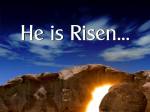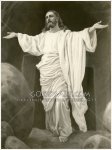First shared at BellatorChristi.com.
33 Defenses for the Resurrection of Jesus
By: Brian G. Chilton, M.Div., Ph.D. | March 29, 2024
I told someone recently that Easter (aka., “Resurrection Sunday”) is my favorite holiday. It holds a greater prominence for the child of God than even Christmas. Up until the commercialization of Christmas, Easter was the central holiday for the Christian. One of my good friends recently stated that her pastor called Easter the “Super Bowl for Christianity,” and for good reason. Easter celebrates the resurrection of Jesus Christ.
However, are there good reasons for believing that Jesus of Nazareth literally arose from the dead on that first Resurrection Sunday? The historicity of the resurrection and the Gospels were a major sticking point for me in my time of doubt. If the resurrection was only wishful thinking, then believers have no genuine hope for their eternity. Yet if the resurrection is true and did occur, then the believer has a hope that nothing else could afford. But do we know that it did happen?
In my book The Layman’s Manual on Christian Apologetics, I used an acronym to lay out the core fundamental evidence for the resurrection. However, my doctoral studies revealed even deeper reasons to accept the resurrection of Christ as a real event of history. Using the acronym RISEN as a launch pad, we will consider 33 defenses for the resurrection of Jesus. For those who are unfamiliar with Layman’s Manual on Christian Apologetics, the RISEN acronym stands for the following:
Records of Jesus’s resurrection,
Irritating details about the resurrection that show its truthfulness,
Sightings of the risen Jesus,
Early testimony about the risen Jesus,
and the disciples’ Newfound faith.[1]
Records of Jesus’s Crucifixion and Resurrection
Jesus’s resurrection maintains a high level of credibility when considering the early records that speak of this event. For this section, five groups of independent sources will serve as the first five defenses for the resurrection.
(1) Five Independent Testimonies in the Gospels.
Now, you likely read the above statement and asked yourself, “Five independent sources in the Gospels? How can there be five independent sources when there are only four Gospels? Within the four Gospels, scholars recognize five independent sources behind the texts.
1) Q, the initial for the German word quelle, meaning source, contains the independent sources shared by the Gospel of Matthew and the Gospel of Luke. Scholars maintain that Q may be among the earliest source material in the Gospels.
2) The pre-Markan material makes up the second independent source, and it could very well date to the 30s.
3) The source material marked “M” represents the material that is exclusive to Matthew’s Gospel.
4) The “L” material is source material that is only found in the Gospel of Luke.
And, finally, 5) there is the independent source material found in John’s Gospel. The Markan material briefly describes the resurrection of Jesus. Q may not explicitly reference the resurrection, but it does contain material where Jesus alludes to, if not boldly predict his resurrection. Additionally, M, L, and John’s material all speak of the resurrection of Jesus, even noting the risen appearances of Jesus. Altogether, these five sources alone offer a strong case for the resurrection of Jesus.
(2) Independent Testimonies in the Epistles
Like the Gospels, we must consider the individual epistles as singular documents of history. Paul discusses the resurrection of Jesus thoroughly in 1 Corinthians 15. James the brother of Jesus does not specifically discuss the resurrection. However, he does call Jesus by the title “Lord,” indicating that he identified him with divinity. Only the resurrection could have convinced James of this association. Peter wrote two epistles. In those documents, he refers to Christ as the cornerstone (1 Pet. 2:6) and alludes to the resurrection with his teachings of God raising up those who had suffered. Likewise, John wrote three letters and identified Jesus with the Logos (wisdom) of God—a tremendously high theology that flowed from an understanding of the risen Jesus.
(3) Extra-biblical Christian Testimonies about the Resurrection.
Outside of the biblical texts, numerous Christian authors of the first and second-century, along with subsequent generations mentioned the death, burial, and resurrection of Jesus This present exercise will not permit us to list all of them at this time. However, among the more prominent writers include Clement of Rome, Ignatius, Irenaeus, Polycarp, and Justin Martyr.
(4) Extra-biblical Roman Testimonies about the Resurrection.
Early Roman historians make mention of Jesus of Nazareth and the early Christian’s belief that Jesus had appeared to them alive on the third day after Jesus’s crucifixion. These historians include Tacitus (AD 55–120), Josephus (c. AD 37–97), Suetonius (AD 69–122), Thallus (c. AD 52) mentioned the darkness that surrounded the region and tried to rationalize it, Pliny the Younger (late first-century through early second-century), and Pliny’s letters to both Emperor Trajan and Emperor Hadrian about how they were to deal with the Christian movement, especially seeing that they refused to worship the gods of the Roman pantheon.
(5) Extra-biblical Jewish Testimonies about the Resurrection.
Additionally, it may surprise some to find that early Jewish rabbis included comments about Jesus in the Jewish Talmud, although their comments were not that flattering. Many referred to Jesus as a sorcerer (speaking to Jesus’s miracles), a deceiver (speaking of the resurrection), and a bastard (speaking to the Virgin Birth). Certainly, their portrayal of Jesus was not that kind.
Irritating Details
We now move on to the second letter of our RISEN acronym, which is the “I” that indicates irritating details of the resurrection that would be embarrassing for the early Christians to proclaim. For our present venture, these irritating details also speak to details surrounding the resurrection that skeptics may have a difficult time explaining.
(6) The Testimony of Women as the First Eyewitnesses.

Nearly every record of the resurrection begins with the testimony of women. Living in an egalitarian society as we do in the United States, many may look over this truth as inconsequential. However, it is far from that. The testimony of women did not enjoy the same strength as a man’s. Therefore, if a woman testified to seeing something as phenomenal as the resurrection, her report may not be taken seriously. Yet it was the faithful women of Jesus’s troupe that first saw Jesus risen from the dead and encounter the empty tomb. Even the disciples scoffed at this notion at first. The early church would simply not invent this detail if it were not true.
(7) Joseph of Arimathea Offering the Burial for Jesus.
Another embarrassing detail for the church was that they could not offer Jesus a proper burial. In fact, a member of the very Sanhedrin that condemned Jesus, named Joseph of Arimathea, offered the family and friends of Jesus his newly cut tomb to inter the body of Jesus. According to the tradition of the day, families would leave a body wrapped in cloth for a year. After a year, the body decayed in the dry, arid climate of Israel. The family then took the cloth and poured the bones into a family burial box called an ossuary. The early church would not have shown and exposed Joseph of Arimathea as the caregiver of Jesus if it were not in fact true.
(8) The Testimony of the Resurrection Beginning in Jerusalem.
Skeptics like to infer that the resurrection is a later invention of the church. Yet another detail that is irritating for the skeptic is that the report of the resurrection flowed out of Jerusalem, Israel in AD 33. If a person did not believe the report of the empty tomb, all one had to do was to travel to the tomb and see for themselves. Jerusalem was ground zero for the resurrection event.
(9) The Fact That No One Expected a Resurrection Before the End of Time.
Another irritating detail for the skeptic is yet another detail that is often overlooked. Many skeptics posit that the early church presented Jesus as the risen Son of God to fulfill some expectations they had for the Messiah. However, data suggests that the early church would not have done such a thing because they never expected the Messiah to rise from the dead in the first place!!! The understanding of the resurrection according to the Pharisees and Essenes was that the dead would rise at the end of time, not three days after the Messiah’s death. The messianic anticipation was that the Messiah would lead a revolt like Judas Maccabeus did to redeem the people from Roman rule and usher in the end of days. That did not happen. Their idea of a resurrection did not match the resurrection of Jesus.
(10) The Understanding that a Man Hung on a Tree Was Accursed.
Deuteronomy 21:22-23 states that anyone who is hung upon a tree is cursed. As such, Jewish believers would have scoffed at the idea that their hero would have been nailed to a tree. Seeing that they did not have an understanding of a resurrection in the here and now, the idea of a crucified Messiah makes no sense unless it was accompanied by a resurrection. Early followers of Jesus would have abandoned him as an accursed man unless they had reasons to believe that he had overcome death itself. The resurrection was the answer.
(11) The Crucifixion Nail.
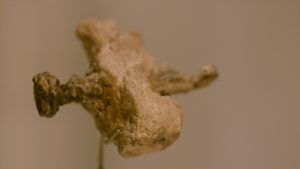
Archaeologists discovered a portion of a heel bone that dated to a first-century crucified man named Yehohannon. Most interestingly, the heel bone contained a nail that was bent around a piece of olive wood. The nail is one of the first physical examples of the crucifixion. It also shows the brutality of the practice, which highly dismisses any idea that a person could have merely passed out on the cross and reawakened in a normal state after spending three days in a tomb. Additionally, another example of a crucified ankle was found a few years ago in northern Italy.
(12) The Nazareth Decree.
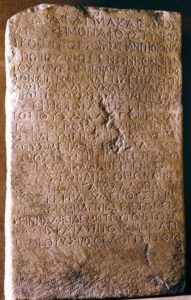
Archaeologists also discovered another artifact of great interest. It is a decree offered by the emperor. Scholars typically agree that it was decreed by Claudius between AD 41–54.[2] The decree states the following:
“It is my decision [concerning] graves and tombs—whoever has made them for the religious observances of parents, or children, or household members—that these remain undisturbed forever. But if anyone legally charges that another person has destroyed, or has in any manner extracted those who have been buried, or has moved with wicked intent those who have been buried to other places, committing a crime against them, or has moved sepulcher-sealing stones, against such a person, I order that a judicial tribunal be created, just as [is done] concerning the gods in human religious observances, even more so will it be obligatory to treat with honor those who have been entombed. You are absolutely not to allow anyone to move [those who have been entombed]. But if [someone does], I wish that [violator] to suffer capital punishment under the title of tomb-breaker.”
The decree reveals that the news of Jesus’s resurrection likely reached the ears of the emperor at least by the 40s. The decree was posted in Nazareth, Jesus’s hometown. Coincidence? I think not.
(13) The Ossuary of James.
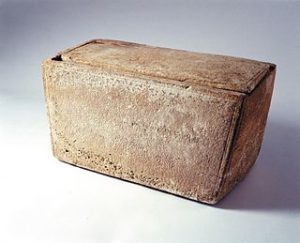
The thirteenth defense isn’t as strong as others on this list, but it is still worth mentioning. A few years ago, archaeologists discovered an ossuary (i.e., a burial box) that contained the remains of a man named Joseph who was identified as the brother of Jesus. The ossuary dates to the first-century, leading many to deduce that the ossuary contained the bones of James the brother of Jesus. While the ossuary of James does not necessarily prove the resurrection, it does show that the burial practices presented in the Gospels match those of the times. If the burial box is legitimate and is connected to the holy family, then it does show that James’s identity was tied to being a brother of Jesus just as James was identified in the biblical narratives.
(14) The Shroud of Turin.
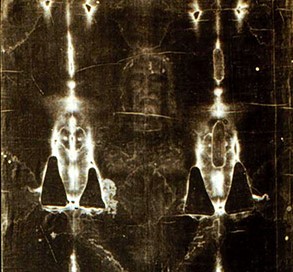
Space will not allow us to give all the reasons to believe that the Shroud of Turin is legitimate. However, we can say that new data more strongly than ever suggests that the Shroud is the authentic burial cloth of Jesus. For those who are unaware of the cloth, the Shroud of Turin is a herringbone cloth that contains a faint, hair-length image of a crucified man that matches the same kind of crucifixion that Jesus experienced. Recent data suggests that a similar image can be made if a cloth is exposed to high doses of X-ray radiation. For the image on the cloth to be made, it would require that a high dose of light radiation luminated from the body and that the body dematerialized, leading to the cloth collapsing on itself. These details match what one would expect with a resurrection event.
Sightings of the Risen Jesus
The biblical texts record numerous records of those who saw Jesus alive. The resurrected appearances of Jesus were a very public affair. This makes it even more difficult to dismiss.
(15) 500 Eyewitnesses of the Risen Jesus.
In the NT Creed of 1 Corinthians 15:3–9, 500 people were listed as eyewitnesses who saw the risen Jesus at the same time. Often, women were not included in public lists. If this continued with the early church, then only men were counted in this number. This would mean that possibly over 1,000 people saw the risen Jesus at the same moment in time.
(16) Women at the Tomb.
As previously noted, the female disciples of Jesus were the first to see him alive after he had risen from the dead. They are universally listed as the first eyewitnesses of the risen Jesus in all the Gospel narratives.
(17) Twelve Disciples.
After the betrayal of Judas and his suicide, the church replaced Judas with Matthias. Nonetheless, these disciples are either called the Twelve, or the Eleven in the resurrection reports due to their diminished number (Matt. 28:16; Lk. 24:9, 33). The grouping of the disciples into a singular number was done earlier in church history rather than later. Usages of “the Eleven” or “the Twelve” denote an earlier timeframe.
(18) Sighting Reported by James
James the brother of Jesus is listed in the report of eyewitnesses in 1 Corinthians 15. He was not a believer in Jesus prior to the resurrection. Yet he is later identified as a follower and the first pastor of the Church of Jerusalem.
(19) Family of Jesus.
Mary and the family of Jesus are also listed among the list of those who witnessed the risen Jesus. The brothers and sisters of Jesus became believers after the resurrection, indicating that something big happened between the crucifixion and the advent of the church.
(20) Sighting Reported by Paul.
Paul was an enemy of the church and even persecuted early church members. However, Paul became a believer and an early apostle of the church after seeing the risen Jesus on the road of Damascus.
Early Testimony
Skeptics often claim that the resurrection of Jesus was a later invention of the church. However, data strongly suggests that the message of the resurrection was proclaimed early in the life of the church. The report emerged at the creation of the church. The church flowed out from the belief that Jesus had literally risen from the dead.
(21) NT Creeds.
NT creeds are early confessions, statements of belief, hymns, and other formulations that flowed out of the early church and were recorded throughout the NT epistles. NT creeds are found in 1 and 2 Corinthians, Romans, Colossians, Philippians, Ephesians, 1 and 2 Thessalonians, 1 Timothy, and various other documents. Some are even found in the Gospels and the book of Revelation. Among these formulations, one of the most important and most agreed upon creeds is found in 1 Corinthians 15:3–9. The 1 Corinthians 15 creed lays out the fundamentals of the resurrection while also speaking of those who had encountered the risen Jesus. The creeds are strewn about the NT and date to no more than 5 years after the resurrection, with the 1 Corinthians 15 creed dating to within months of the resurrection itself.
(22) Oral Traditions of the Gospels.
The early church was founded in what was a largely oral culture. While I do believe that Jewish men had a higher literacy rate than the common Greco-Roman world at that time, the cost to publish materials was quite expensive. Dr. Craig Keener suggests that the publication of the Gospel of Mark or the book of Romans could have equivocated to something around $2,000 to $3,000 in modern currency—twenty denarii in ancient currency.[3] A project like that would require group funding. Nonetheless, most material was passed along orally.
Now before you object, know that it has been shown that cultures can pass along volumes of information from one generation to another without changing any major detail. The Talmud is an example of that process. Even still, oral traditions, like the NT creeds, have certain traits that can be detected. Through my research, I discovered that the Gospel of Matthew contains many of these traits, especially with the teachings of Jesus. While I have not researched the resurrection traditions—but plan to do so—I did find that the statements referencing the resurrection itself found a strong root in early oral traditions. Thus, the statements referencing the resurrection arose prior to the writing of the book. The Matthean Great Commission statement offered by the risen Jesus holds all the traits of an NT creed, thus indicating its early nature.
(23) Sermon Summaries in Acts.
Oral traditions are not only found within the Gospels, they are also found in the sermon summaries of Paul and Peter in the book of Acts. Among these summaries include Paul and Peter’s proclamation that Jesus had indeed risen from the dead. The early nature of some of these proclamations places them in the 30s and 40s.
(24) Use of the Title “Lord” with Jesus.
NT scholar Richard Bauckham deduced that the “earliest Christology was the highest Christology.” By that, he meant that the early Christian movement held a high theological view of Jesus, equivocating him with the Father in some sense. This is evident with the thorough usage of the title “kurios,”—a Greek term meaning “Lord.” Gary Habermas has implied that this is one of the clearest examples that early Christians held Jesus to be in some part divine.
The title “Lord Jesus Christ” is often associated with the resurrection stories, including Thomas’s awe-struck response “My Lord and my God” when seeing the risen Jesus for himself. This title would not have been applied to one who was only crucified, seeing a person hung from a tree was believed to have been accursed. Something to the effect of a resurrection would have been necessary to show the divine nature of Jesus. In other words, a crucified man alone would never be elevated to the status of “Lord.”
(25) The Exclusive Use of “Son of Man” in the Gospels and Its Association with the Resurrection.

Jesus almost exclusively uses the title “Son of man” inflexively about himself. The title is only used four times outside of the Gospels—once by Stephen the first martyr as he was being killed (Acts 7:56), a quotation of Ezekiel in Hebrews 2:6, and two references in the book of Revelation (Rev. 1:13; 14:14), both connecting Jesus to the Son of Man character in Daniel 7:13–14. In the Gospels, however, Jesus uses the title for himself 14 times in Mark, 10 times in Q, 7 times exclusively in Matthew, 7 times exclusively in Luke, and 13 times in John. Altogether, Jesus uses the title 51 times.[4]
Contrary to popular belief, the title does not refer to the humanity of Jesus. Rather, it speaks of a divine being who takes on a humanlike form as he approaches the Ancient of Days in Daniel 7:13–14. Furthermore, the title is connected to the idea that Jesus would rise from the dead (Lk. 11:30) and ascend to the right hand of his Father (Mk. 14:62). The title is so strongly connected with the teachings of Jesus that NT scholar Joachim Jeremias commented, “…the apocalyptic Son of Man sayings which we have recognized as the earliest stratum must in essentials go back to Jesus himself.”[5]
(26) Early Stratum in the Resurrection Record.
While many aspects of the resurrection report in the four Gospels may seem a bit confusing, a good chronology of events can be placed together. Nonetheless, there is a common stratum within all reports of the resurrection events that glues them together. The similarities between the reports include the puzzling and mysterious nature of the events, the eyes of people are opened to the identity of Jesus, beams of heavenly light sometimes accompany the divine presence, along with the mysterious appearance and disappearance of Jesus at will. Jeremias calls this stratum a chiaroscuro—a contrast between light and dark.[6] Additionally, these reports include Aramaisms, such as Mary Magdalene calling Jesus “rabboni” (Jn. 20:16) and the potential inclusion of Jesus’s historical name (“Jesus of Nazareth”) (Mk. 16:6).
(27) Early Belief that the Tomb was Empty.
In his magnum opus, Gary Habermas notes that around 75% of scholars maintain the historicity of the empty tomb, still clearly accepted by a vast majority of critical scholars.[7] Even still, a good deal of evidence suggests that the church proclaimed an empty tomb very early in its history. The empty tomb appears in three of the four Gospels.[8] Additionally, the acknowledgment of the empty tomb appears in one of the sermon summaries in Acts, which could quite well be an NT creed.
Paul states, “When they had carried out all that had been written about him, they took him down from the tree and put him in a tomb. But God raised him from the dead, and he appeared for many days to those who came up with him from Galilee to Jerusalem, who are now his witnesses to the people” (Acts 13:29–30, CSB). The sermon summaries in Acts are extremely early. Even if the summaries date to the 40s, we have very early testimony of an empty tomb. NT scholar James D. G. Dunn attests, “The story of the empty tomb was probably being told in Jerusalem shortly after the event.”[9]
(28) Church of the Holy Sepulchre.
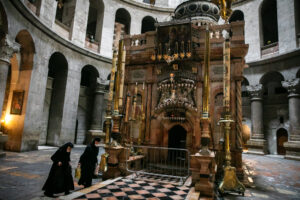
Speaking of the empty tomb, this brings us to defense #28. Protestants often claim that the Garden Tomb in Jerusalem was the likely place of Jesus’s burial. But this simply cannot be true. The tomb is too old to have belonged to Joseph of Arimathea. Furthermore, it holds no historical grounding, contains no features of a first-century tomb, and was likely created in the 7th century BC. Remember that the tomb belonging to Joseph of Arimathea was newly cut (Lk. 23:53). Though the Garden Tomb does not match, the same cannot be said of the Church of the Holy Sepulchre.
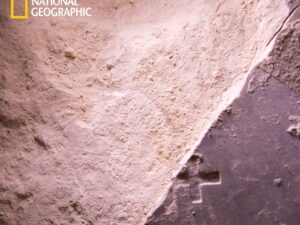
Due to repair work, the stone slab covering the tomb had to be removed temporarily. Underneath, researchers found remnants of an earlier tomb, labeled with a cross amid first-century limestone. The tomb was said to have been discovered by Helena, the mother of Constantine, once Christianity became a legal religion in Rome. Local Christians had been worshiping at the tomb for centuries as they acknowledged that the tomb belonged to Jesus. Earlier Roman authorities placed a statue of Venus to desecrate the site. However, this act did not deter the Christians from their worship activities. Later, the tomb was cut out and a cathedral was built around it. Archaeologist Ted Wright once said that he was 98% certain that the tomb was the authentic burial site of Jesus.[10]
Newfound Faith
The last letter of our acronym denotes the newfound faith of the early believers. Picture yourself as one of the early disciples. You invested yourself fully in the cause of Jesus. Despite your good intentions and wholehearted investment, your beloved leader dies on a Roman cross. Everything you worked for is now lost. Quite honestly, most of the disciples probably thought about going back to their chosen occupation before following Jesus. However, due to the resurrection, they embraced a newfound truth that they had not expected nor anticipated. Jesus defeated death and ushered in a new mode of existence. Light replaced dark, life overcame death, and the goodness of God triumphed over the powers of evil.
(29) The Transformation of Paul.
The transformation of Paul was quite baffling. Paul had been a persecutor of the church. Yet after seeing the risen Jesus, he not only accepted the tenets of Christianity, but he was one of the hardest-working Christian evangelists of all time.
(30) The Transformation of James.
None of the family members of Jesus, outside of Mary the mother of Jesus, believed him to be the Messiah prior to his resurrection (Jn. 7:5). However, oddly, Jesus’s siblings became believers after his resurrection. James became such a strong believer in Jesus that he became the first pastor of the Church of Jerusalem.
(31) The Willingness of the Disciples to Die for What They Knew to Be True.
Even though some people will die for something they mistakenly believe to be true, no one will die for something they know to be a lie, especially if that condemnation includes an excruciating death. Yet the disciples of Jesus were willing to die for what they knew to be true. They never wavered, and they never changed their minds. They knew Jesus to be the risen Son of God.
(32) Change of the Day of Worship from Saturday to Sunday.
Perhaps one of the most astounding defenses for the resurrection was the early disciples’ decision to change their day of worship from the Sabbath day (Friday evening—Saturday) to early Sunday morning. They called this day the “Lord’s Day” (Rev. 1:10). The change in worship times was done to commemorate the resurrection of Jesus. N. T. Wright maintains that 1 Corinthians 16:2 implies that the church began keeping Sunday as the Lord’s Day as early as the mid-50s if not earlier.[11] In the early church, leaders often waited until early Easter Sunday to baptize everyone who had come to faith the previous year. Easter Sunday became one of the most important days of the year for the early Christians because of the resurrection of Jesus.
(33) Jesus’s Fulfillment of Messianic Prophecies.
Last, but certainly not least, the early Christians professed that Jesus had fulfilled numerous messianic prophecies predicted about the Messiah. And they were absolutely on point! Space does not permit us to elucidate every prophecy at this time. But it can be said that Jesus fulfilled so many prophecies about the Messiah through his life, death, and resurrection that it is mathematically impossible to leave to chance. It is assuredly impossible for anyone by mere human means to fulfill the prophecies written about the Messiah, particularly concerning his resurrection.
Admittedly, this article turned out much longer than I anticipated. And in full disclosure, I took a shotgun approach to the defenses for the resurrection as I laid out multiple lines of defense. Some are assuredly stronger than others. Nevertheless, given these 33 data points, a person can build a cumulative case for the proposition that Jesus of Nazareth literally rose from the dead on the first Easter Sunday.
There is much more that could be offered, such as the inability of alternative theories to explain all the details, further studies into oral traditions and their trustworthiness, enemy attestation, the chronology of Easter events, and other factors concerning Jesus’s post-Easter appearances. Suffice it to say, we have every reason to believe that Jesus is the risen Son of God. So, what will you do with the data that has been given? It’s one thing to accept that Jesus arose from the dead, but it is quite another to accept him as the Lord of your life. What will you do with the risen Jesus?
About the Author
Brian G. Chilton, M.Div., Ph.D.

Brian G. Chilton is the founder of Bellator Christi Ministries and the co-host of the Bellator Christi Podcast. Dr. Chilton earned a Ph.D. in the Theology and Apologetics at Liberty University (with high distinction), a M.Div. in Theology from Liberty University (with high distinction); his B.S. in Religious Studies and Philosophy from Gardner-Webb University (with honors); earned a Certificate in Christian Apologetics from Biola University, and completed Unit 1 of Clinical Pastoral Education at Wake Forest University’s School of Medicine. Dr. Chilton is a member of the Evangelical Theological Society and the Evangelical Philosophical Society. In his spare time, he enjoys reading, working out in his home gym, and watching football. He has served in pastoral ministry for over 20 years, works as a clinical hospice chaplain, and is an Adjunct Professor of Apologetics at Carolina College of Biblical Studies (https://www.CCBS.edu).
Notes
[1] Brian G. Chilton, Layman’s Manual on Christian Apologetics, 96–99.
[2] Gary Habermas, The Historical Jesus: Ancient Evidence for the Life of Christ, 176.
[3] Craig S. Keener, IVP Bible Background Commentary: New Testament, 418.
[4] Joachim Jeremias, New Testament Theology, 259–260.
[5] Joachim Jeremias, New Testament Theology, 266.
[6] Ibid., 303.
[7] Gary Habermas, On the Resurrection: Evidences, 141.
[8] Ibid., 47.
[9] James D. G. Dunn, Jesus Remembered, 836.
[10] Look for Bellator Christi’s interview with Ted Wright on earlier episodes.
[11] N. T. Wright, Resurrection of the Son of God, 297, 579, 594.
33 Defenses of the Resurrection of Jesus on YouTube
(c) 2024. Bellator Christi.

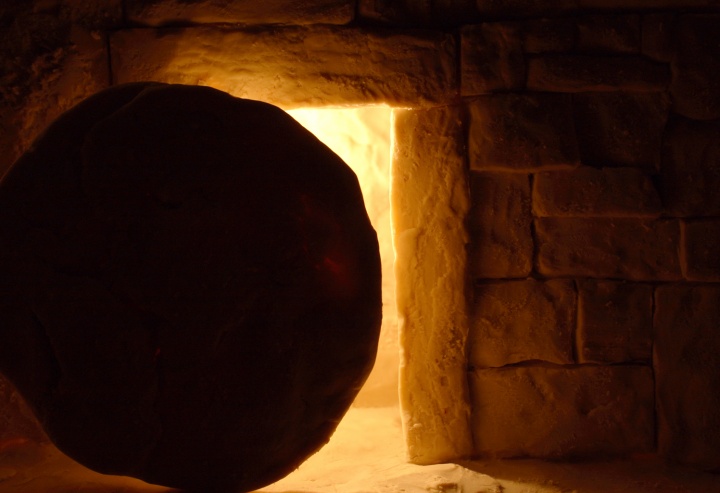
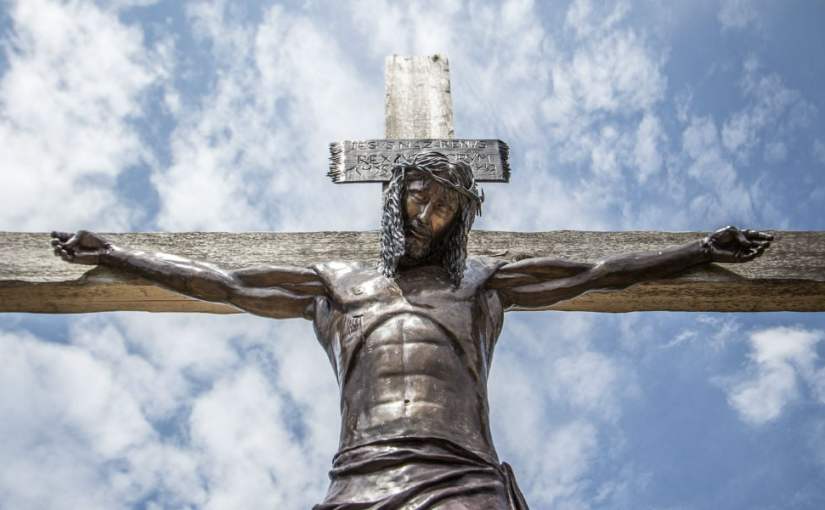


 The best reason for my love of Easter is that it is the holiest day of the year for Christians. Easter
The best reason for my love of Easter is that it is the holiest day of the year for Christians. Easter represents the day that Jesus physically and literally rose from the dead. While I am Southern Baptist, I personally practice liturgical spiritual disciplines. I credit Dr. T. Perry Hildreth, professor at Gardner-Webb, for turning me to these practices. That is to say, I have a cross in my prayer garden that bears cloths representing the colors of the church year. The green cloth represents ordinary time when no special occasion is celebrated. Red is used for Pentecost, Holy Week, and special church days. Purple is used during the time of lent. I personally use blue for Advent (the time before Christmas) although purple is the standard color. White is used for Christmas and the Easter season.
represents the day that Jesus physically and literally rose from the dead. While I am Southern Baptist, I personally practice liturgical spiritual disciplines. I credit Dr. T. Perry Hildreth, professor at Gardner-Webb, for turning me to these practices. That is to say, I have a cross in my prayer garden that bears cloths representing the colors of the church year. The green cloth represents ordinary time when no special occasion is celebrated. Red is used for Pentecost, Holy Week, and special church days. Purple is used during the time of lent. I personally use blue for Advent (the time before Christmas) although purple is the standard color. White is used for Christmas and the Easter season. Brian G. Chilton is the founder of BellatorChristi.com and is the host of The Bellator Christi Podcast. He received his Master of Divinity in Theology from Liberty University (with high distinction); his Bachelor of Science in Religious Studies and Philosophy from Gardner-Webb University (with honors); and received certification in Christian Apologetics from Biola University. Brian is currently in the Ph.D. program in Theology and Apologetics at Liberty University. Brian has been in the ministry for over 15 years and serves as the pastor of Huntsville Baptist Church in Yadkinville, North Carolina.
Brian G. Chilton is the founder of BellatorChristi.com and is the host of The Bellator Christi Podcast. He received his Master of Divinity in Theology from Liberty University (with high distinction); his Bachelor of Science in Religious Studies and Philosophy from Gardner-Webb University (with honors); and received certification in Christian Apologetics from Biola University. Brian is currently in the Ph.D. program in Theology and Apologetics at Liberty University. Brian has been in the ministry for over 15 years and serves as the pastor of Huntsville Baptist Church in Yadkinville, North Carolina.











